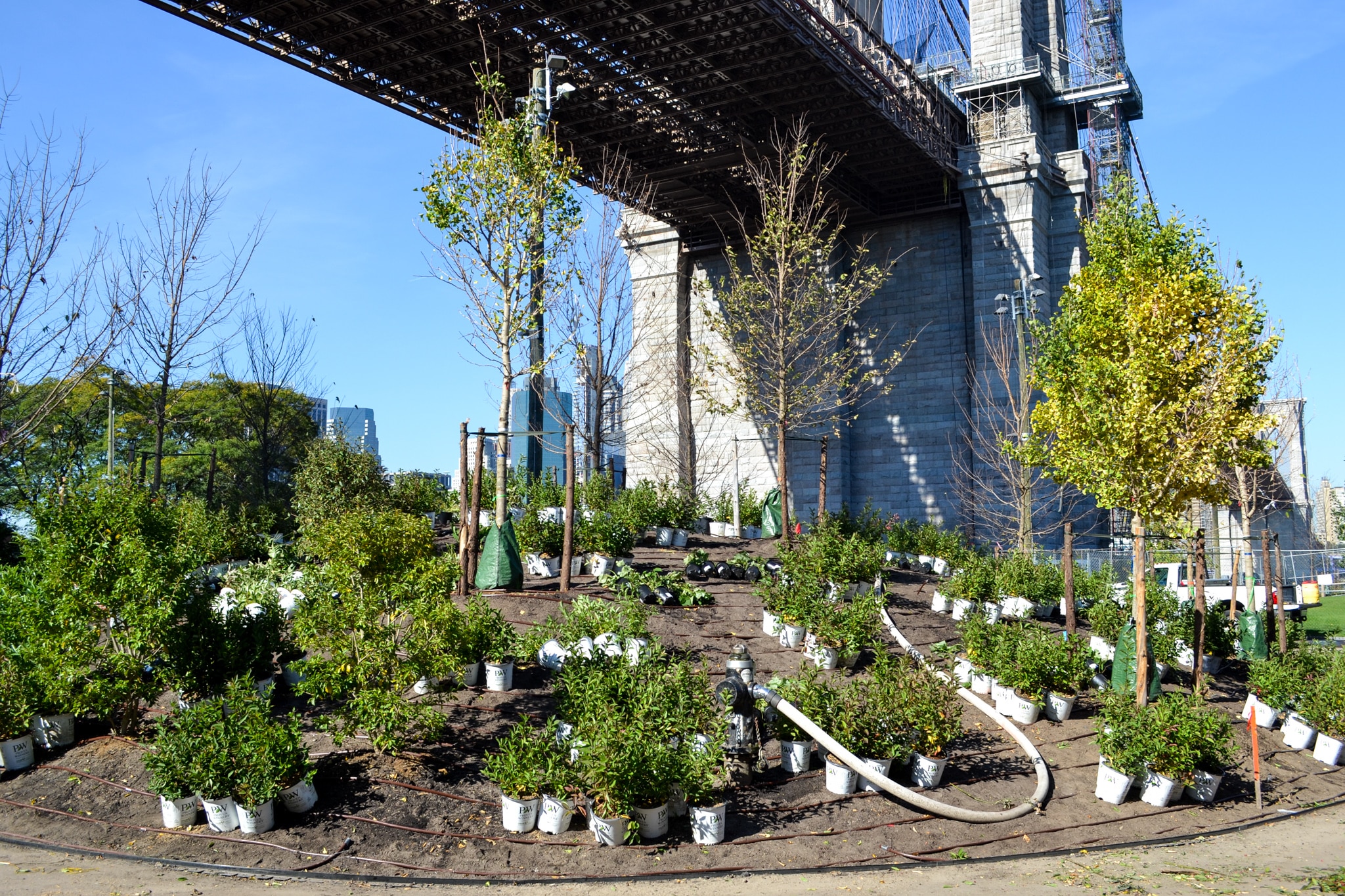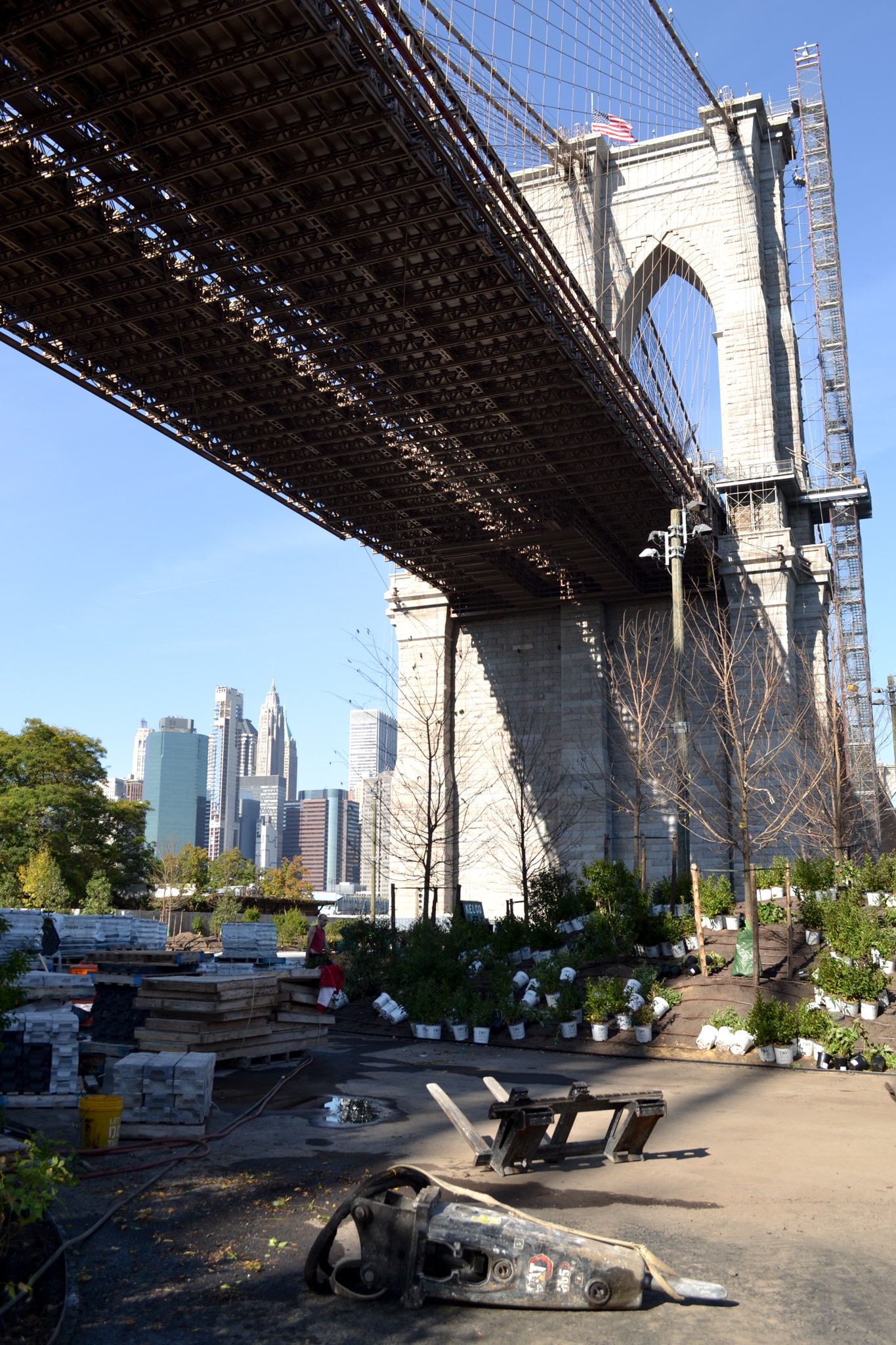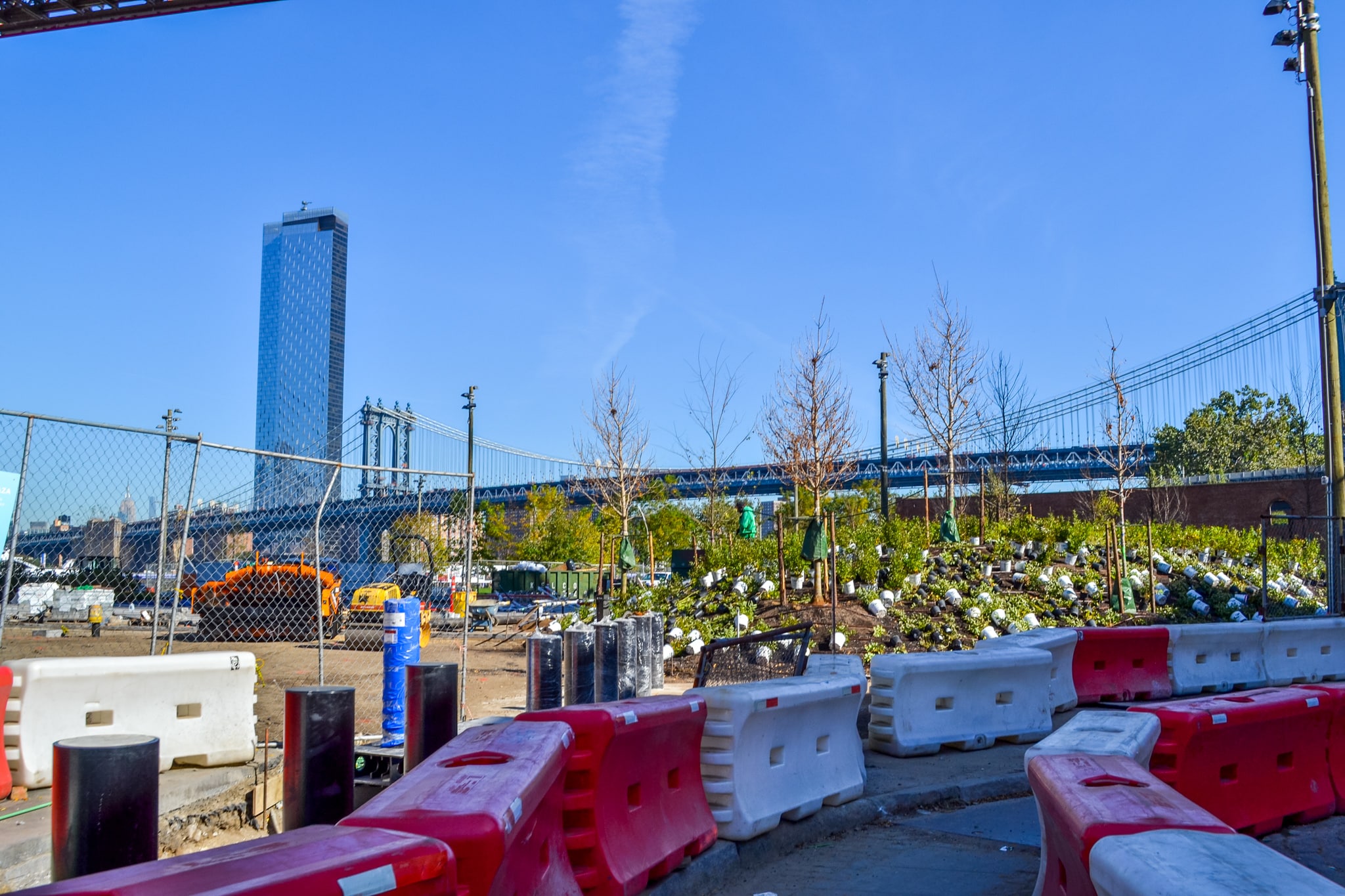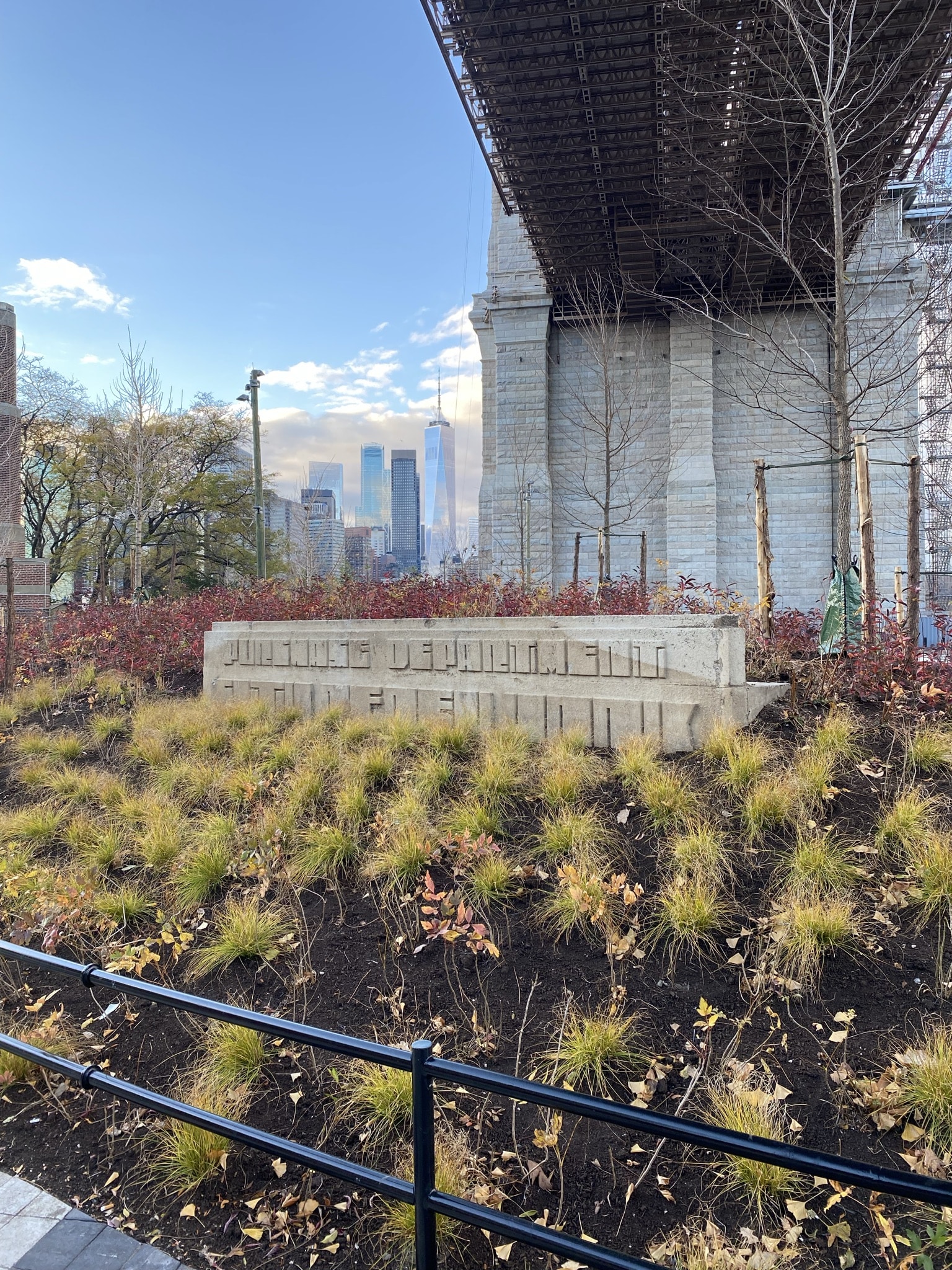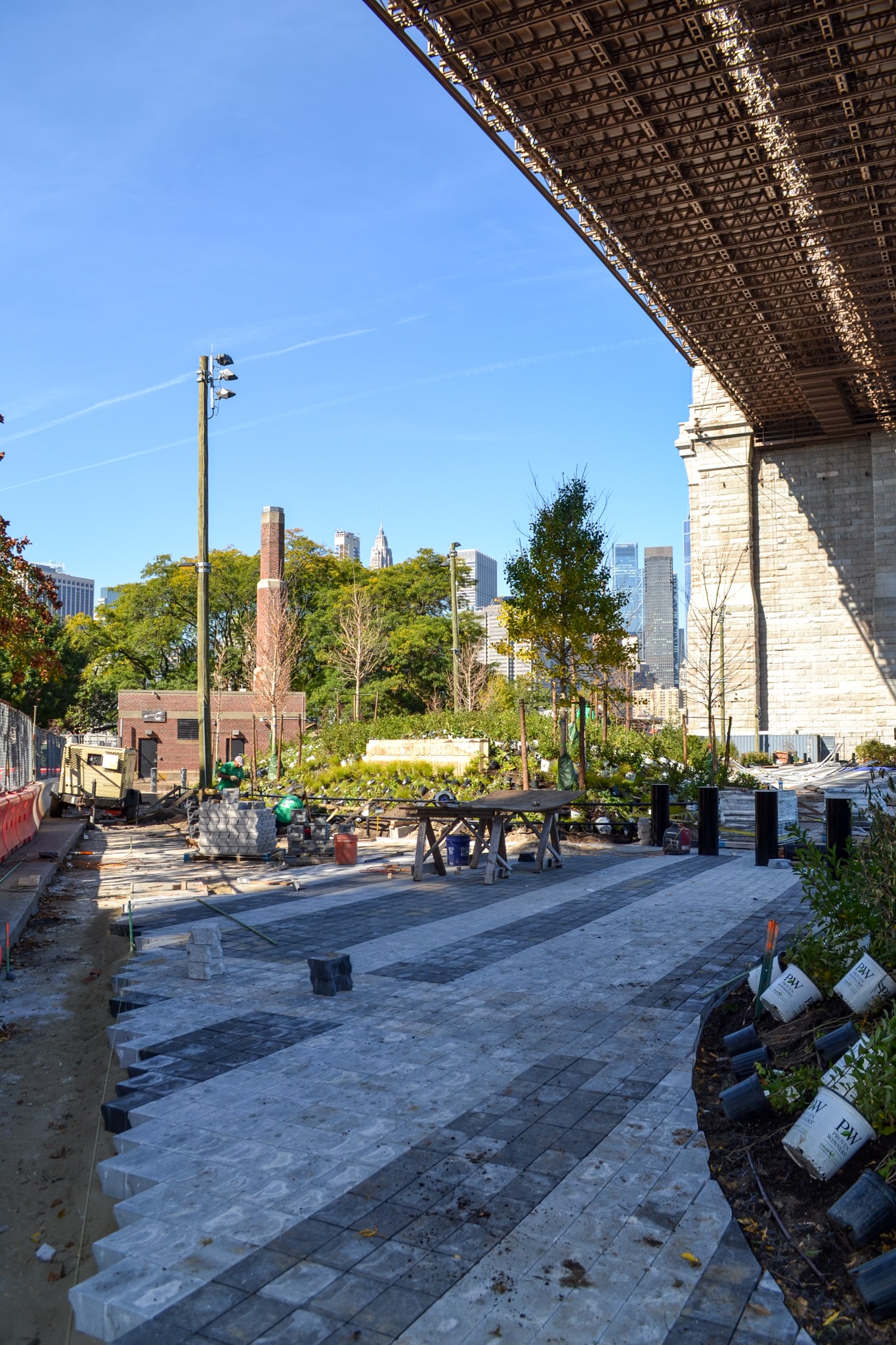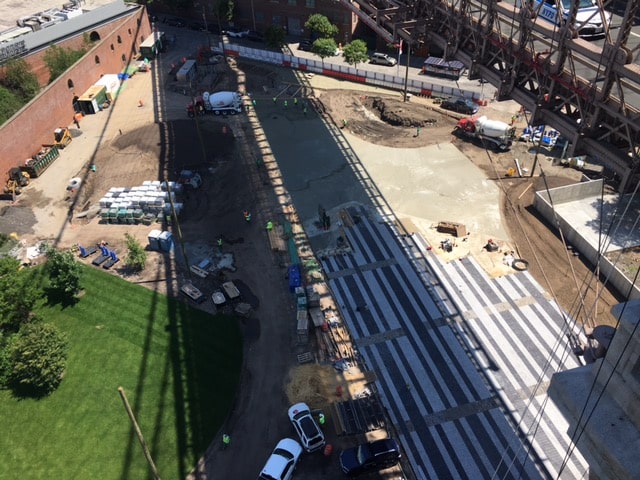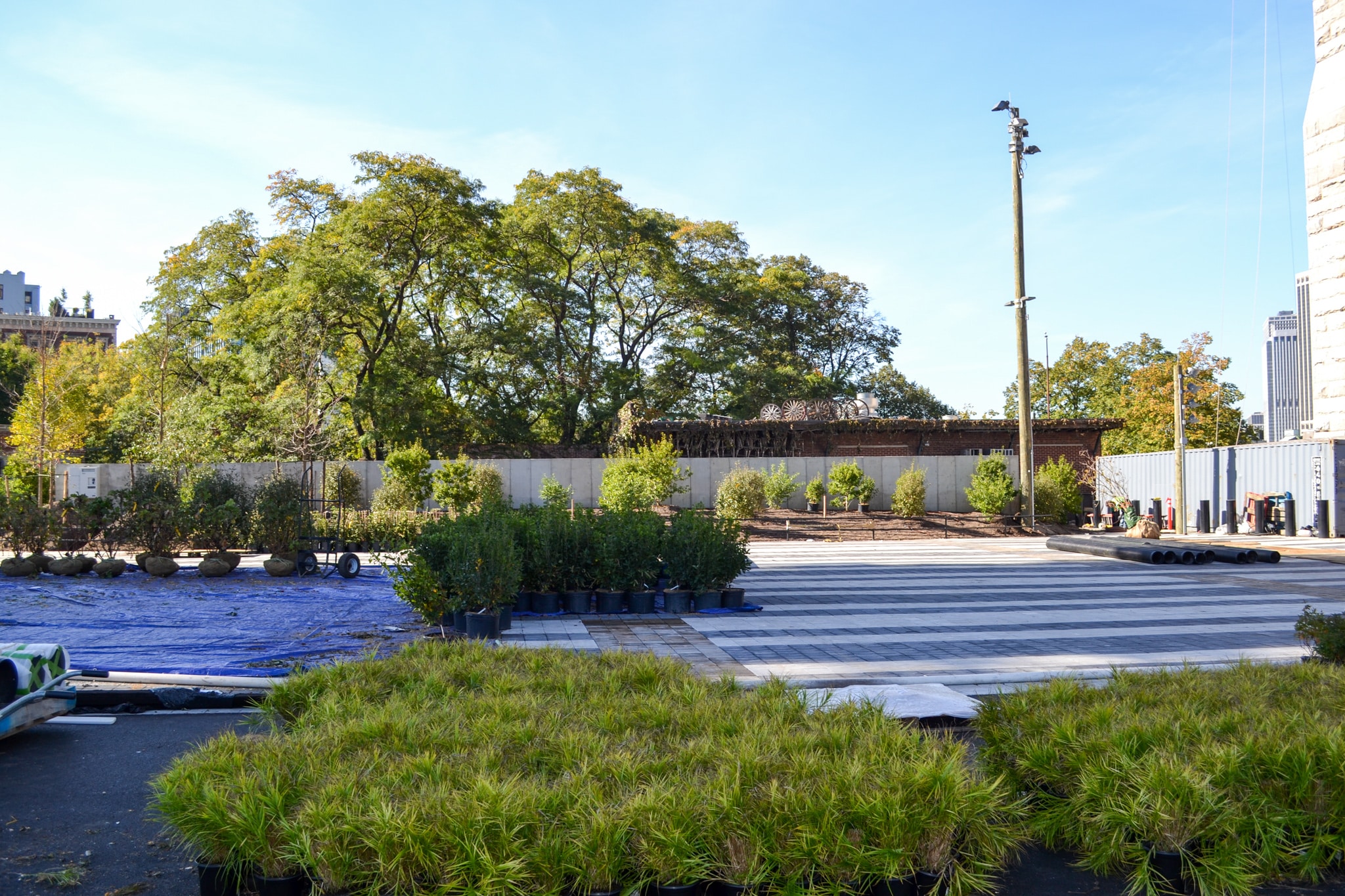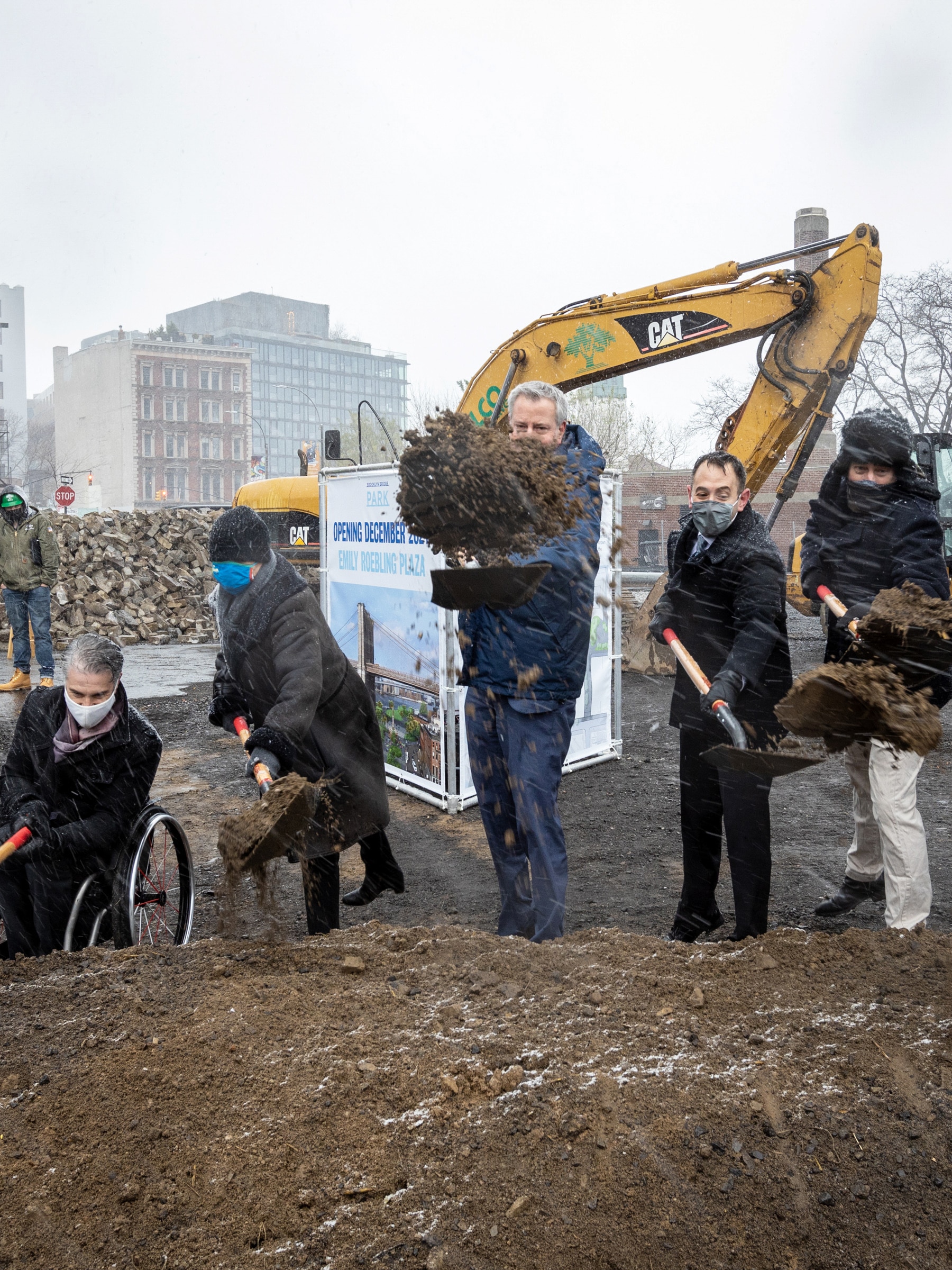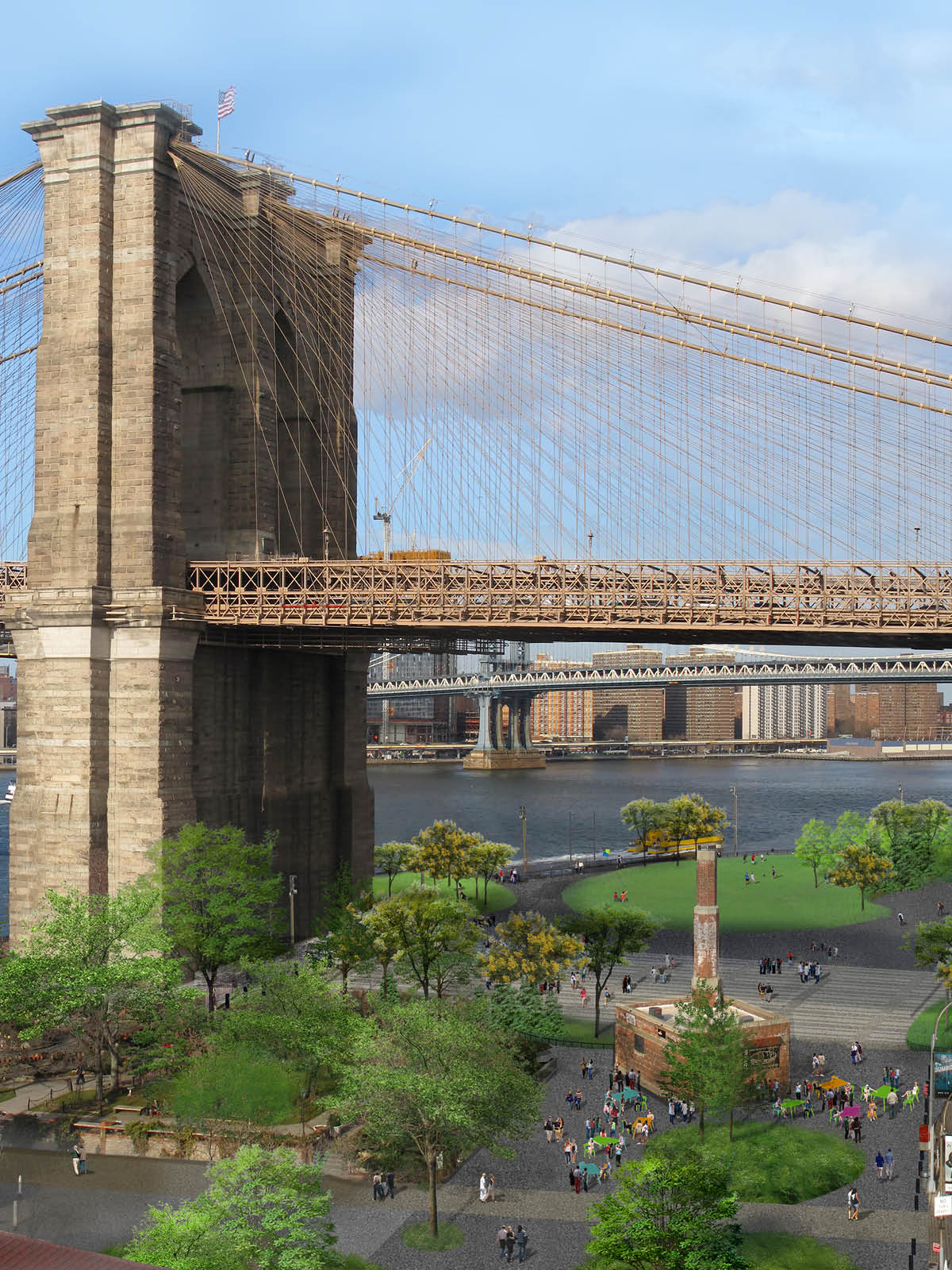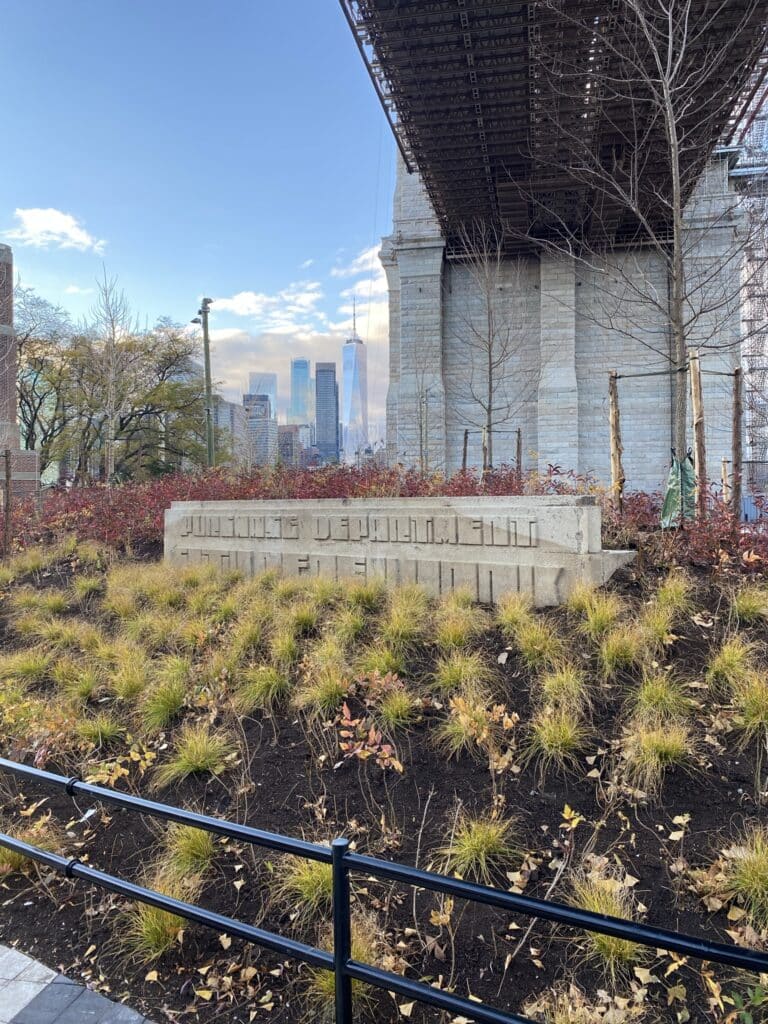This area beneath the Brooklyn Bridge is a flexible public plaza space that adds two acres of parkland and links the Main Street & John Street park sections to the southern piers, a crucial connection point that enhances the flow of pedestrian traffic in the Park, while providing a moment to observe the incredible Brooklyn Bridge from below. This project marks the completion of the Park as originally planned and honors the rich history of the Brooklyn Bridge.
Named in honor of Emily Warren Roebling, who is known for her work ensuring the completion of the Brooklyn Bridge, this final section of the Park pays tribute to the rich history of the Bridge. Emily Warren Roebling Plaza features a large hardscaped area designed with concrete pavers that echo the pattern and engineering of the above Bridge and is surrounded by landscaped trees, lawns, and benches. The adjacent Empire Fulton Ferry Lawn reopened earlier this year after renovations to better connect the two spaces. This project also includes the installation of over one hundred protective bollards stretching from Old Fulton Street and Furman Street to Water Street and New Dock Street, for enhanced pedestrian safety.
Catch a preview of Emily Warren Roebling Plaza on CBS Morning Show, The history of the Brooklyn Bridge: “Such an iconic piece of New York City and beyond”
From NY1: The finishing touch on Brooklyn Bridge Park is here


